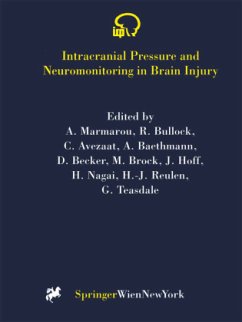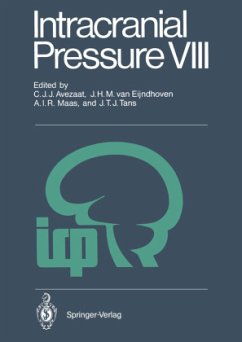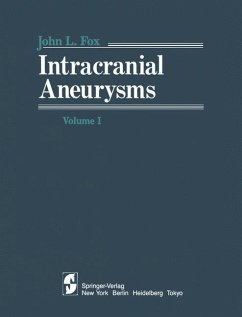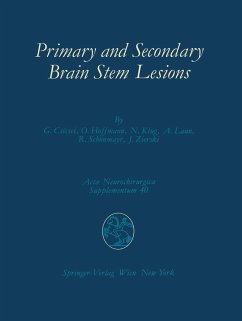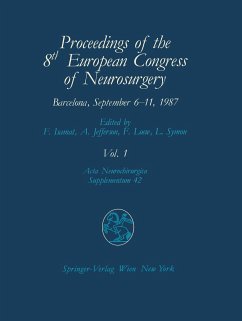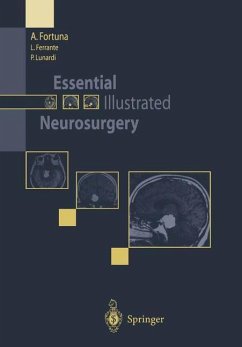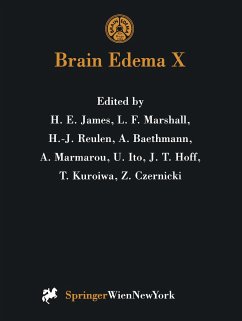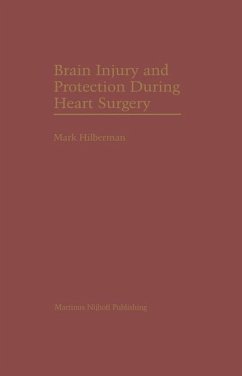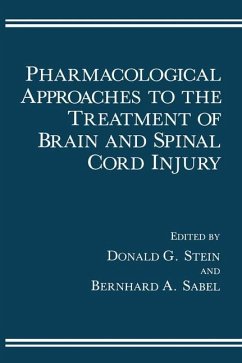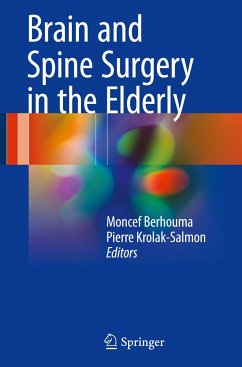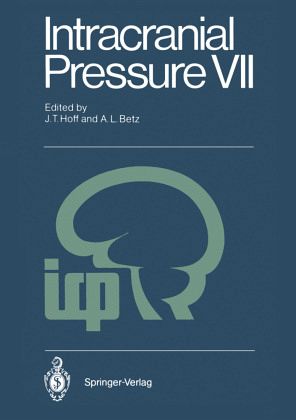
Intracranial Pressure VII
Proceedings of the Seventh International Symposium on Intracranial Pressure, Held in Ann Arbor, USA, June 19-23, 1988
Herausgegeben: Hoff, Julian T.; Betz, A. Lorris

PAYBACK Punkte
20 °P sammeln!
This book is a compilation of scientific papers presented at the Seventh Interna tional Symposium on Intracranial Pressure and Brain Injury, held in Ann Arbor, Michigan, USA, June 20-23, 1988. The symposium explored both clinical and basic science aspects of intracranial pressure dynamics and their clinical applica tion. Neuroscientists including neurologists, neurosurgeons, neuroanesthesiolo gists, neuroradiologists, neurochemists, biophysicists and physiologists contrib uted to the state-of-the-art presentations and discussions. Open exchange of ideas characterized this meeting as it did the...
This book is a compilation of scientific papers presented at the Seventh Interna tional Symposium on Intracranial Pressure and Brain Injury, held in Ann Arbor, Michigan, USA, June 20-23, 1988. The symposium explored both clinical and basic science aspects of intracranial pressure dynamics and their clinical applica tion. Neuroscientists including neurologists, neurosurgeons, neuroanesthesiolo gists, neuroradiologists, neurochemists, biophysicists and physiologists contrib uted to the state-of-the-art presentations and discussions. Open exchange of ideas characterized this meeting as it did the initial meeting in Hanover, Germany in 1972 and subsequently at tri-annual meetings in Lund, Sweden; Groningen, Holland; Williamsburg, Virginia; Tokyo, Japan; and Glas gow, Scotland. The next Intracranial Pressure Symposium, to be held in Rotter dam, Holland, in 1991, will continue this tradition. The papers in this book have been grouped for the reader's convenience. Clinical and basic science papers focus on the same subject, consequently they appear together. Subjects include monitoring; biophysics; CSF dynamics and hydrocephalus; control of intracranial pressure; trauma, hemorrhage, and in flammation; free radicals; cerebral perfusion and metabolism; and brain edema. The science of intracranial pressure and its relevance to human illness con tinues to provide fascination for investigators throughout the world. This book reflects the research of many of them and, hopefully, will stimulate new and innovative inquiries.





